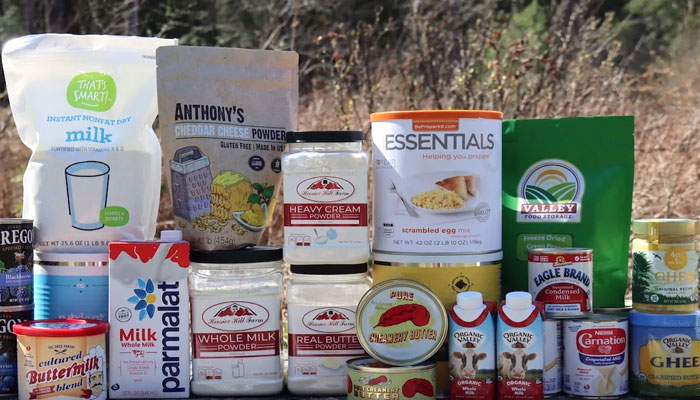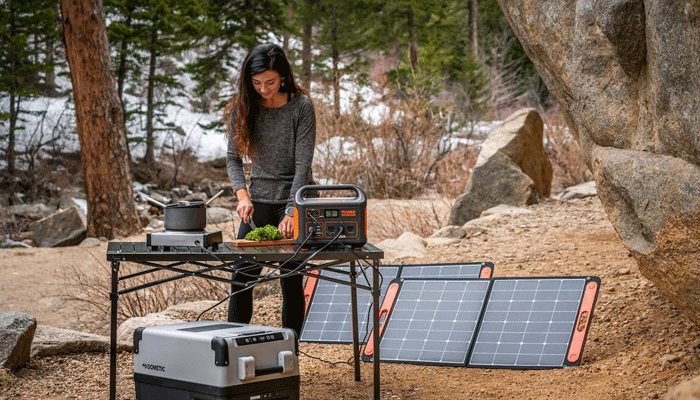
Whether stored in a basement stockpile, backpacking survival kit, or bug-out bag, emergency food supplies will provide critical nutrition during an emergency. Many emergency food supplies have a long shelf life.
The best budget options for freeze-dried emergency meals include Valley Food Storage and Mountain House. These brands offer great flavor and a good amount of calories for the price.
Canned Foods
Canned foods are an essential part of any emergency supply kit. They provide essential vitamins and minerals and are easy to store without losing their freshness. They’ve also been able to extend their shelf lives and are reasonably cheap. In addition, many canned foods can be eaten right out of the can or easily rehydrated using hot or room-temperature water.
When stocking up on canned foods for emergencies, be sure to purchase a wide variety of items that your family likes to eat. You may want to include items like tuna, sardines, beans, and chili. Other staples to consider are fruits, vegetables, and soups.
Another good choice is freeze-dried foods. These foods have a longer shelf-life than canned foods and are more nutritious than other canned goods. You can find freeze-dried foods at Food & Drinks Promo Code. Be sure to buy freeze-dried foods that have a low sodium content if you have someone in your family who needs to watch their salt intake.
Be sure to rotate your Emergency Food Supplies so that the oldest cans are used first. This is called the FIFO method and it will help ensure that your canned foods last as long as possible.
Ideally, you should store your canned foods in a cool, dry place away from moisture and pests. If your home is in an area that is prone to flooding, you might want to consider storing your canned foods high up in a closet or a cabinet. Inspect your canned food supplies regularly for signs of spoilage. Avoid foods that have bad smells or that are leaking, bulging, or dented. Large or severe dents that involve the seams of cans may break seals and cause food poisoning.
Dry Foods
If the power goes out, it will be hard to use your stove or refrigerator, so having non-perishable dry foods can help you get through a disaster. Choose foods that are easy to prepare and have a high nutritional value. Also, make sure to include shelf-stable drinks in your disaster supplies.
One of the most popular Emergency Food Kits options is freeze-dried meals that can be reconstituted with water or other liquids. For example, Valley Food Storage Coupon makes the Classic Bucket that contains 24 servings of freeze-dried meals like chicken fried rice or beef stroganoff. The meals have a 30-year shelf life and are packed with nutrients, such as protein, iron, and potassium.
Other Emergency Foods to consider include crackers, cereals, and dried fruits and vegetables. They are long-lasting and can be eaten as is or warmed for a hot meal. Choose foods that will meet the needs of your family, including any infants, older adults, and people with dietary restrictions.
A few of the best companies that offer emergency foods online are Backpacker’s Pantry, NuManna, and Augason Farms. The first company offers a wide variety of survival foods that are gluten-free and have no added MSG or GMOs. Its products are also lactose-free and vegan. Another option is the Survive2Thrive Vegetarian Preparedness Pail from Augason Farms. It has a 36-pound weight and contains organic quinoa, brown rice, sprouted buckwheat groats, and more. Some of the items in this package can be cooked instantly in boiling water, while others require a little more work, such as soaking overnight.
Water
Disasters like hurricanes, floods, tornadoes, and winter storms can leave families without access to food, water, and electricity for days or even weeks. Taking the time to stock up on emergency food supplies can make a huge difference in how your family can survive.
The most basic foods to have on hand in a disaster are shelf-stable dry goods that can be stored for long periods. These items include grains, beans, sugar, salt, and flour. If you know how to cook, this type of food can be used to create a variety of recipes that can provide a good balance of nutrients for your family in the event of an emergency.
Another important item to have on hand is a supply of canned fruits and vegetables since they can be a great source of vitamins and minerals in a crisis. If possible, try to incorporate some frozen vegetables into your stash as well. These will have a longer shelf life than fresh produce and can be used to add flavor and texture to many different meals.
Freeze-dried foods are also an excellent choice for emergency storage. These products have a much longer shelf-life than canned or dried foods and can be rehydrated with hot or cold water. They can be more expensive than other types of emergency food, but they are a great way to add variety and nutritional value to your meals.
There are a lot of different freeze-dried emergency food options available, but it is important to select a quality brand. One of the best suppliers is ReadyWise, which offers a wide range of meal options that can be purchased individually or in large buckets. They also offer a sampler pack that contains their most popular meal options.
Medication
It’s important to think beyond food as one of your top emergency preparedness supplies. It’s also a good idea to have an emergency supply of relevant medication. This is especially true if you have children, elderly, or disabled family members. If you do not have medical insurance, you may need to purchase emergency antibiotics to help prevent infection and disease in the event of a disaster.
Medication should be stored in a safe, easily accessible place and should be clearly labeled as “Emergency Medicine.” If you are interested in purchasing emergency medication, consider buying a kit from a survival food supplier such as NuManna or Augason Farms. A single kit will contain a full course of emergency antibiotics and can save your family’s life.
You should include at least a three-day supply of nonperishable food in your emergency kit. FEMA recommends choosing foods your family will eat and paying attention to any special dietary needs. Some examples of emergency foods to store are protein or fruit bars, dry cereal, and ready-to-eat canned options such as Mountain House meals or Augason Farms.
It’s also a good idea to add some high-protein, low-sodium canned soups or stews to your emergency food supplies. These are especially good to keep on hand if you lose power or have to evacuate your home during a natural disaster. These are easy to heat up and will provide some needed nutrition in addition to your other emergency preparedness supplies. If possible, look for canned soups with added vegetables and fruits. These are often less expensive than other canned food items and offer more nutrients. Also, remember to stock up on your favorite brand of long-lasting canned food and take advantage of sales at grocery stores.
First Aid Supplies
When disaster strikes, you’ll want to be able to quickly grab your supplies. Imagine a flash flood that forces you to evacuate your home at 2:00 a.m. You’ll likely have little time to assemble food from the pantry, fill bottles of water, grab your first aid kit or snag a flashlight and radio from the closet. Having these essentials packed and ready will save you precious moments, especially if your family members are injured.
When selecting food for your emergency supply, it’s best to choose foods that will require little or no cooking. This will ensure you have quick, easy meals in the event of an emergency where the loss of electricity, natural gas, or water may prevent normal cooking.
Make sure the foods in your emergency kit provide a variety of nutrients to keep everyone healthy. If you choose canned foods, look for those that do not have a lot of salt or high amounts of preservatives. Also, consider how many calories are in each meal and if they are adequate to meet your needs.
You can find food kits for emergencies on the market that contain a wide variety of ingredients, including freeze-dried meals from suppliers such as Legacy Food Storage. These meals typically have a higher calorie count than those from other suppliers and are packaged in rodent-proof cans. But before you buy an Emergency Food Supply kit, check the company’s customer service and product reviews. A good supplier will stand behind their products, provide a money-back guarantee and offer customer support. Look for a company that has been in business for at least a few years and offers contact information on its website.
Conclusion
Having emergency food supplies on hand is crucial for any disaster situation. By choosing high-quality, long-lasting options such as freeze-dried meals, canned goods, and energy bars, you can ensure that you and your loved ones will have access to nutritious food when it’s needed most. Don’t wait until it’s too late – start building your emergency food supply today!








